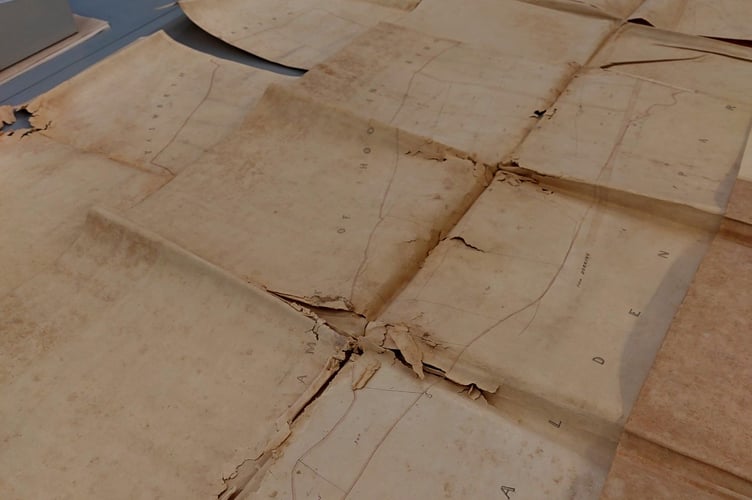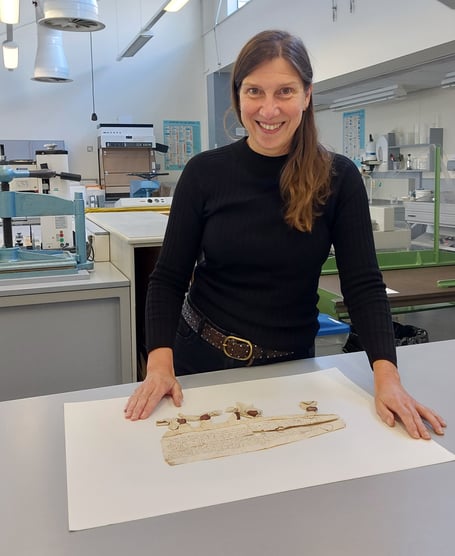
The vast and growing resource of written documents, maps, illustrations and photographs at Surrey History Centre in Woking requires loving care.
Behind the public areas at the centre is a well-equipped conservation facility that cares for archives about the whole of Surrey: from medieval manuscripts to modern newspapers, maps to books, and watercolours to photographs. They document the story of the county and its people from the 12th to the 21st centuries.
Many items in the collection have been badly damaged over time. For example, they may be fragile and stained due to damp damage in previous storage, and affected by mould which breaks down the paper causing it to crumble.
It is sometimes necessary to reverse past “restoration” efforts, such as by sticky tape that has dried and fallen away leaving a dark residue which must be carefully removed.
Surrey History Centre’s conservator, Rachel Marsh, explained: “We have a great conservation facility where I carry out archive conservation treatments on everything from paper to parchment, wax seals, books, maps, and plans.”
Rachel has over 12 years’ experience working in conservation. “I gained a degree in illustration then went on to study bookbinding before completing the Archive and Records Association Certificate in Conservation in 2007. I started working at Surrey History Centre last year having previously worked on archives in Gloucestershire and Somerset.”
Conservation requires scientific knowledge of the composition of papers and other materials as well as superb craft skills. Rachel describes many of the processes she uses in an article published on Surrey History Centre’s web pages – https://tinyurl.com/mvfcmvdm
“The example I described is a tithe map of Chessington, which proved to be a lengthy and challenging repair. It had become very fragile due to damp damage in previous storage and paper was crumbling away in the damaged sections.”
Tithe maps were produced as a result of the 1836 Tithe Commutation Act. They detail plots of land owned and occupied by all levels of society. These were then linked to very detailed maps to identify where the plots are. Surrey History Centre includes maps and documents from areas that were historically part of Surrey, such as Chessington, now within Greater London.
Rachel explained: “The Chessington tithe map had been stored folded with its original linen backing. Damp damaged sections were badly stained. Mould had broken down the paper causing it to crumble and it was incredibly fragile in some sections.
“The map was to be stored rolled, not folded, so I selected a special lining paper, to which the individual map sections were carefully fixed after each had been cleaned and strengthened. There were many missing areas which I infilled with a handmade paper matching the original. This can take a long time on such a large document.”
The map will be stored rolled up in Surrey History Centre’s archives, but will first be digitised. Historians and the public can then access it electronically, eliminating the need for rolling and unrolling, which may damage it.
In addition to posting her article online, Rachel will give an online talk about the tithe map restoration as part of Surrey Heritage’s “Talks and events” series.
Her talk is “Behind the Scenes in Conservation”, on Wednesday 30 October from 5.30pm to 6.45pm, via Zoom. Tickets are £6 and can be booked online (https://tinyurl.com/44bfvzjc). The Zoom link will be sent after payment has been received.





Comments
This article has no comments yet. Be the first to leave a comment.